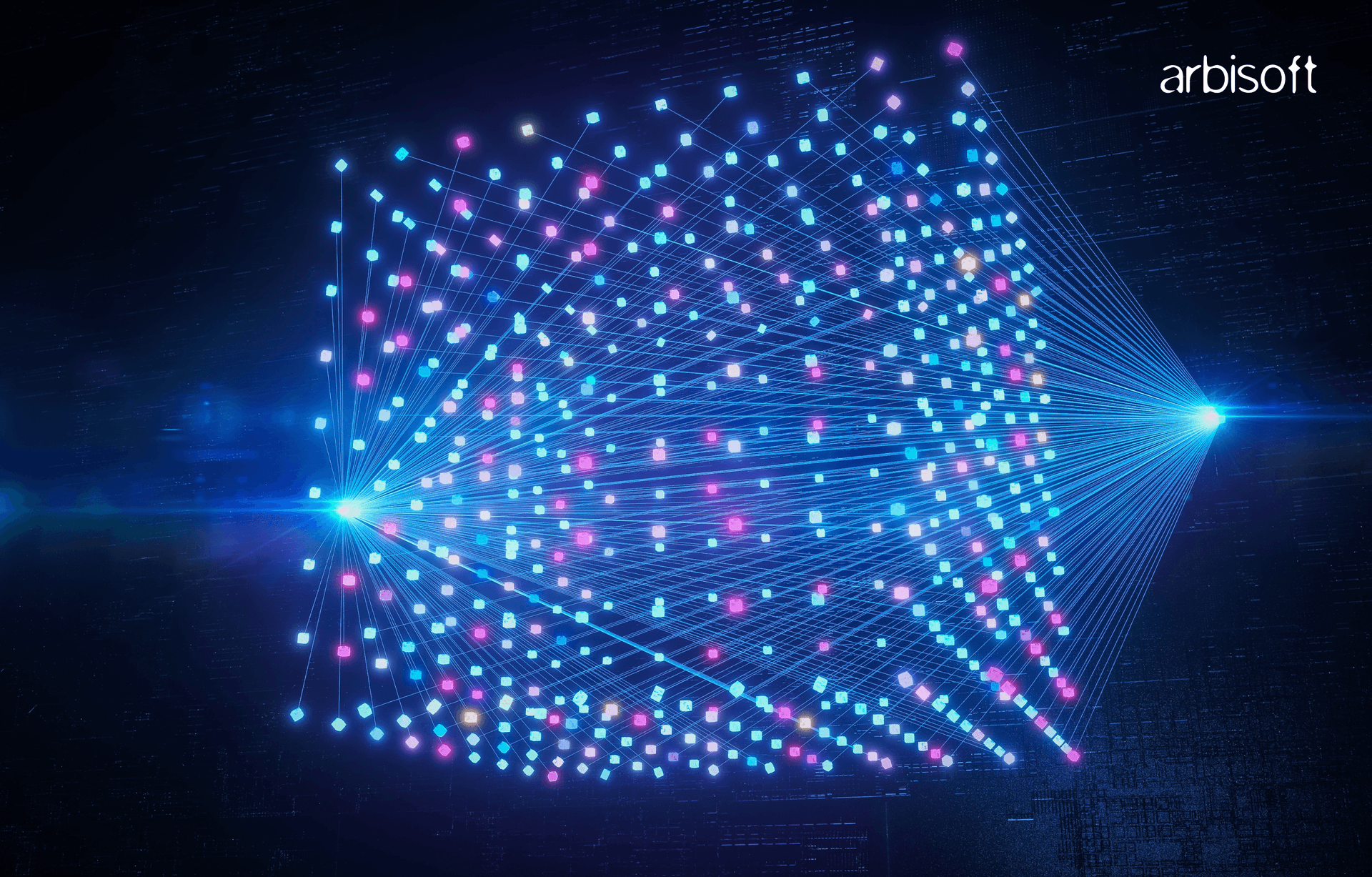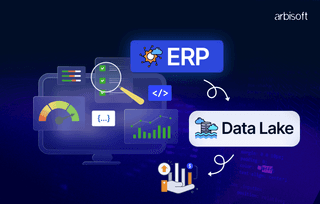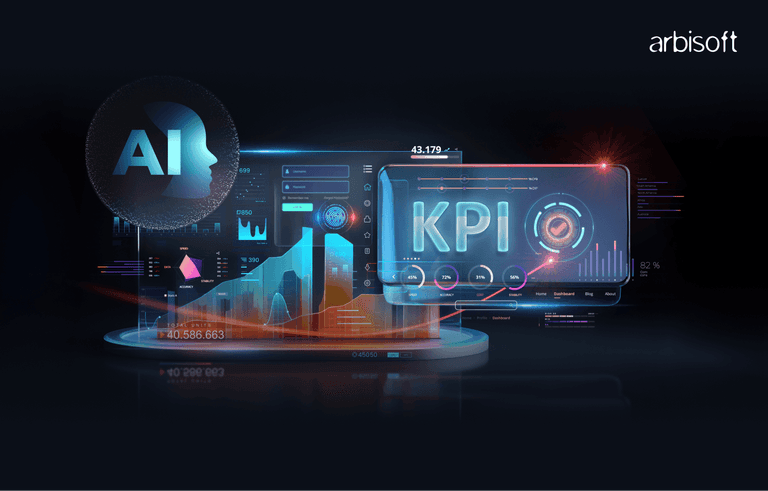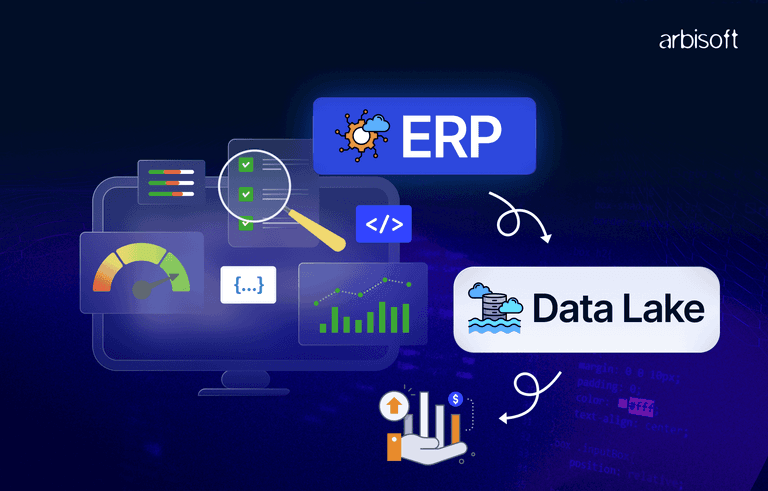We put excellence, value and quality above all - and it shows




A Technology Partnership That Goes Beyond Code

“Arbisoft has been my most trusted technology partner for now over 15 years. Arbisoft has very unique methods of recruiting and training, and the results demonstrate that. They have great teams, great positive attitudes and great communication.”
Zero-Shot Learning: Training Models for Unseen Data Classes

Introduction: When Your Model Meets the Unknown
I've often faced the problem where my classifier, trained on cats, dogs, and birds, is suddenly asked to recognize a zebra. The usual ML approach just fails—predicts something random and moves on. But what if we could teach our models to use common sense? If it knows what stripes are, what mammals look like, and can connect the dots, it should at least guess "zebra" even if it's never seen one.
Zero-shot learning (ZSL) is about making this possible. Instead of feeding the model thousands of labeled examples for every class, we use semantic relationships, attributes, and descriptions. This is not just a theoretical idea—it's a practical solution for real-world problems where you can't possibly label everything.
In this write-up, I’ll walk you through how ZSL works, why it matters, and how you can build a simple version in Java. I’ll skip the academic fluff and focus on what actually helps you get results.
Understanding Zero-Shot Learning: The Paradigm Shift
Traditional vs. Zero-Shot Learning
Most ML models are stuck in their comfort zone: they only predict what they've seen. ZSL breaks this by letting you add new classes on the fly, as long as you can describe them. Think of it as giving your model a cheat sheet of attributes and letting it reason.
┌─────────────────────────────────────────────────────────────────┐
│ LEARNING PARADIGM COMPARISON │
└─────────────────────────────────────────────────────────────────┘
TRADITIONAL SUPERVISED LEARNING:
┌─────────────────┐ ┌─────────────────┐ ┌─────────────────┐
│ TRAINING │ │ TESTING │ │ PREDICTION │
│ │ │ │ │ │
│ • Known Classes │───▶│ • Same Classes │───▶│ • Fixed Output │
│ • Labeled Data │ │ • Seen Examples │ │ • No Adaptation │
│ • Direct Mapping│ │ • Direct Match │ │ • Limited Scope │
└─────────────────┘ └─────────────────┘ └─────────────────┘
ZERO-SHOT LEARNING:
┌─────────────────┐ ┌─────────────────┐ ┌─────────────────┐
│ TRAINING │ │ TESTING │ │ PREDICTION │
│ │ │ │ │ │
│ • Seen Classes │───▶│ • Unseen Classes│───▶│ • Novel Classes │
│ • Semantic Info │ │ • Attribute Map │ │ • Generalization│
│ • Embedding Map │ │ • Inference │ │ • Extensible │
└─────────────────┘ └─────────────────┘ └─────────────────┘Core Components of Zero-Shot Learning
At its heart, ZSL is about connecting features (like pixels or text) to a semantic space (attributes, word vectors, etc.). You need:
- Semantic Space: Where you store descriptions/attributes for each class.
- Embedding Function: Maps your data into this space.
- Inference Mechanism: Decides which class is the best match.
I find that the trickiest part is designing good semantic representations. If your attributes are vague, your model will be too.
┌─────────────────────────────────────────────────────────────────┐
│ ZERO-SHOT LEARNING ARCHITECTURE │
└─────────────────────────────────────────────────────────────────┘
┌─────────────────┐ ┌─────────────────┐ ┌─────────────────┐
│ VISUAL │ │ SEMANTIC │ │ CLASS │
│ FEATURES │ │ SPACE │ │ INFERENCE │
│ │ │ │ │ │
│ • CNN Features │───▶│ • Attribute Vec │───▶│ • Similarity │
│ • ResNet │ │ • Word2Vec │ │ • Nearest Match │
│ • Pre-trained │ │ • Knowledge G. │ │ • Threshold │
└─────────────────┘ └─────────────────┘ └─────────────────┘
│ ▲ │
│ │ │
└───────────────────────┼───────────────────────┘
│
┌─────────────────┐
│ TRAINING │
│ ALIGNMENT │
│ │
│ • Loss Function │
│ • Embedding │
│ • Optimization │
└─────────────────┘Mathematical Foundations and Algorithms
The Semantic Embedding Approach
Here's the basic idea: you want a function that takes your image features and spits out something close to the semantic vector of the correct class. If you can do that, you can match unseen classes by their description.
MATHEMATICAL FORMULATION:
Given:
- X: Visual feature space (e.g., CNN features)
- S: Semantic space (e.g., attribute vectors)
- f: Embedding function X → S
Objective:
Learn f such that for unseen class y_new:
similarity(f(x), s_y_new) is maximized when x belongs to y_new
Where s_y_new is the semantic representation of the unseen class.Attribute-Based Zero-Shot Learning
I prefer to keep things simple. In Java, you can represent your semantic space as a map of class names to attribute vectors. The code below is a minimal version—expand as needed for your use case.
// Core Zero-Shot Learning Framework in Java
import java.util.*;
import java.util.stream.IntStream;
public class ZeroShotLearningFramework {
// Semantic attribute space dimension
private static final int SEMANTIC_DIM = 300;
// Visual feature dimension
private static final int VISUAL_DIM = 2048;
/**
* Represents a semantic embedding space for zero-shot learning
*/
public static class SemanticSpace {
private Map<String, double[]> classAttributes;
private Map<String, double[]> wordEmbeddings;
public SemanticSpace() {
this.classAttributes = new HashMap<>();
this.wordEmbeddings = new HashMap<>();
}
/**
* Add class with its attribute vector
*/
public void addClass(String className, double[] attributes) {
if (attributes.length != SEMANTIC_DIM) {
throw new IllegalArgumentException("Attribute vector dimension mismatch");
}
classAttributes.put(className, attributes.clone());
}
/**
* Get semantic representation for a class
*/
public double[] getSemanticVector(String className) {
return classAttributes.get(className);
}
/**
* Compute semantic similarity between two classes
*/
public double computeSimilarity(String class1, String class2) {
double[] vec1 = getSemanticVector(class1);
double[] vec2 = getSemanticVector(class2);
if (vec1 == null || vec2 == null) {
return 0.0;
}
return cosineSimilarity(vec1, vec2);
}
private double cosineSimilarity(double[] a, double[] b) {
double dotProduct = IntStream.range(0, a.length)
.mapToDouble(i -> a[i] * b[i])
.sum();
double normA = Math.sqrt(Arrays.stream(a)
.map(x -> x * x)
.sum());
double normB = Math.sqrt(Arrays.stream(b)
.map(x -> x * x)
.sum());
return dotProduct / (normA * normB);
}
}
}Embedding Network Architecture
You don't need a fancy deep learning setup to get started. A couple of layers mapping visual features to semantic space is enough for a prototype. The code below is a straightforward feedforward network.
/**
* Neural network for learning visual-to-semantic embeddings
*/
public static class EmbeddingNetwork {
private double[][] weights1; // First layer weights
private double[][] weights2; // Second layer weights
private double[] bias1; // First layer bias
private double[] bias2; // Second layer bias
private static final int HIDDEN_DIM = 1024;
private static final double LEARNING_RATE = 0.001;
public EmbeddingNetwork() {
initializeWeights();
}
private void initializeWeights() {
Random random = new Random();
// Xavier initialization
double bound1 = Math.sqrt(6.0 / (VISUAL_DIM + HIDDEN_DIM));
weights1 = new double[VISUAL_DIM][HIDDEN_DIM];
for (int i = 0; i < VISUAL_DIM; i++) {
for (int j = 0; j < HIDDEN_DIM; j++) {
weights1[i][j] = random.nextGaussian() * bound1;
}
}
double bound2 = Math.sqrt(6.0 / (HIDDEN_DIM + SEMANTIC_DIM));
weights2 = new double[HIDDEN_DIM][SEMANTIC_DIM];
for (int i = 0; i < HIDDEN_DIM; i++) {
for (int j = 0; j < SEMANTIC_DIM; j++) {
weights2[i][j] = random.nextGaussian() * bound2;
}
}
bias1 = new double[HIDDEN_DIM];
bias2 = new double[SEMANTIC_DIM];
}
/**
* Forward pass: visual features → semantic embedding
*/
public double[] forward(double[] visualFeatures) {
if (visualFeatures.length != VISUAL_DIM) {
throw new IllegalArgumentException("Visual feature dimension mismatch");
}
// First layer: visual → hidden
double[] hidden = new double[HIDDEN_DIM];
for (int j = 0; j < HIDDEN_DIM; j++) {
double sum = bias1[j];
for (int i = 0; i < VISUAL_DIM; i++) {
sum += visualFeatures[i] * weights1[i][j];
}
hidden[j] = relu(sum);
}
// Second layer: hidden → semantic
double[] semantic = new double[SEMANTIC_DIM];
for (int j = 0; j < SEMANTIC_DIM; j++) {
double sum = bias2[j];
for (int i = 0; i < HIDDEN_DIM; i++) {
sum += hidden[i] * weights2[i][j];
}
semantic[j] = sum; // Linear activation for regression
}
return semantic;
}
private double relu(double x) {
return Math.max(0, x);
}
/**
* Training step with attribute regression loss
*/
public void trainStep(double[] visualFeatures, double[] targetSemantic) {
// Forward pass
double[] predicted = forward(visualFeatures);
// Compute loss (Mean Squared Error)
double loss = 0.0;
for (int i = 0; i < SEMANTIC_DIM; i++) {
double diff = predicted[i] - targetSemantic[i];
loss += diff * diff;
}
loss /= SEMANTIC_DIM;
// Backward pass (simplified gradient computation)
backpropagation(visualFeatures, predicted, targetSemantic);
}
private void backpropagation(double[] input, double[] predicted, double[] target) {
// Compute output layer gradients
double[] outputGradients = new double[SEMANTIC_DIM];
for (int i = 0; i < SEMANTIC_DIM; i++) {
outputGradients[i] = 2.0 * (predicted[i] - target[i]) / SEMANTIC_DIM;
}
// Update weights and biases (simplified)
// In practice, you'd implement full backpropagation with momentum, etc.
for (int i = 0; i < SEMANTIC_DIM; i++) {
bias2[i] -= LEARNING_RATE * outputGradients[i];
}
// Update weights2 (hidden → semantic)
double[] hiddenActivation = computeHiddenActivation(input);
for (int i = 0; i < HIDDEN_DIM; i++) {
for (int j = 0; j < SEMANTIC_DIM; j++) {
weights2[i][j] -= LEARNING_RATE * outputGradients[j] * hiddenActivation[i];
}
}
}
private double[] computeHiddenActivation(double[] input) {
double[] hidden = new double[HIDDEN_DIM];
for (int j = 0; j < HIDDEN_DIM; j++) {
double sum = bias1[j];
for (int i = 0; i < VISUAL_DIM; i++) {
sum += input[i] * weights1[i][j];
}
hidden[j] = relu(sum);
}
return hidden;
}
}Advanced Zero-Shot Learning Architectures
Generative Zero-Shot Learning
Sometimes, you want to go further and generate synthetic features for unseen classes. This lets you train a regular classifier as if you had real data. I’ve found this useful when the semantic descriptions are rich and you trust your generator.
PSEUDOCODE: Generative Zero-Shot Learning
─────────────────────────────────────────
BEGIN GenerativeZSL(seen_classes, unseen_class_semantics)
// Phase 1: Train feature generator
generator = TrainFeatureGenerator(seen_classes)
// Phase 2: Generate synthetic features for unseen classes
synthetic_features = []
FOR EACH unseen_class IN unseen_class_semantics DO
semantic_vector = unseen_class.getSemanticVector()
// Generate multiple synthetic visual features
FOR i = 1 TO num_synthetic_samples DO
synthetic_feature = generator.generate(semantic_vector)
synthetic_features.add(synthetic_feature, unseen_class.label)
END FOR
END FOR
// Phase 3: Train classifier on synthetic + real data
combined_data = CombineData(seen_classes, synthetic_features)
classifier = TrainClassifier(combined_data)
RETURN classifier
END GenerativeZSLImplementation of Generative Adversarial Zero-Shot Learning
If you’re comfortable with generative adversarial networks (GANs), you can use them to generate features for new classes. The code below is a basic sketch. You can tweak it as needed.
/**
* Generative Adversarial Network for Zero-Shot Learning
*/
public static class GenerativeZSLNetwork {
private Generator generator;
private Discriminator discriminator;
private EmbeddingNetwork embedder;
public GenerativeZSLNetwork() {
this.generator = new Generator();
this.discriminator = new Discriminator();
this.embedder = new EmbeddingNetwork();
}
/**
* Generator network: semantic → visual features
*/
public static class Generator {
private double[][] weights;
private double[] bias;
private Random random = new Random();
public Generator() {
// Initialize generator weights
weights = new double[SEMANTIC_DIM + 100][VISUAL_DIM]; // +100 for noise
bias = new double[VISUAL_DIM];
initializeWeights();
}
private void initializeWeights() {
double bound = Math.sqrt(6.0 / (SEMANTIC_DIM + 100 + VISUAL_DIM));
for (int i = 0; i < weights.length; i++) {
for (int j = 0; j < weights[i].length; j++) {
weights[i][j] = random.nextGaussian() * bound;
}
}
}
/**
* Generate visual features from semantic vector and noise
*/
public double[] generate(double[] semanticVector) {
// Concatenate semantic vector with random noise
double[] input = new double[SEMANTIC_DIM + 100];
System.arraycopy(semanticVector, 0, input, 0, SEMANTIC_DIM);
// Add random noise
for (int i = SEMANTIC_DIM; i < input.length; i++) {
input[i] = random.nextGaussian();
}
// Generate features
double[] generated = new double[VISUAL_DIM];
for (int j = 0; j < VISUAL_DIM; j++) {
double sum = bias[j];
for (int i = 0; i < input.length; i++) {
sum += input[i] * weights[i][j];
}
generated[j] = tanh(sum); // Tanh activation for bounded output
}
return generated;
}
private double tanh(double x) {
return Math.tanh(x);
}
}
/**
* Discriminator network: distinguish real vs generated features
*/
public static class Discriminator {
private double[][] weights;
private double[] bias;
public Discriminator() {
weights = new double[VISUAL_DIM][1];
bias = new double[1];
initializeWeights();
}
private void initializeWeights() {
Random random = new Random();
double bound = Math.sqrt(6.0 / (VISUAL_DIM + 1));
for (int i = 0; i < VISUAL_DIM; i++) {
weights[i][0] = random.nextGaussian() * bound;
}
}
/**
* Classify features as real (1) or fake (0)
*/
public double discriminate(double[] visualFeatures) {
double sum = bias[0];
for (int i = 0; i < VISUAL_DIM; i++) {
sum += visualFeatures[i] * weights[i][0];
}
return sigmoid(sum);
}
private double sigmoid(double x) {
return 1.0 / (1.0 + Math.exp(-x));
}
}
/**
* Training procedure for the GAN-based zero-shot learning
*/
public void train(List<TrainingExample> seenData, SemanticSpace semanticSpace, int epochs) {
for (int epoch = 0; epoch < epochs; epoch++) {
// Train discriminator
trainDiscriminator(seenData, semanticSpace);
// Train generator
trainGenerator(seenData, semanticSpace);
if (epoch % 100 == 0) {
System.out.println("Epoch " + epoch + " completed");
}
}
}
private void trainDiscriminator(List<TrainingExample> seenData, SemanticSpace semanticSpace) {
for (TrainingExample example : seenData) {
// Train on real data
double realPrediction = discriminator.discriminate(example.visualFeatures);
// Update discriminator to classify real data as 1
// Train on generated data
double[] semanticVec = semanticSpace.getSemanticVector(example.className);
double[] fakeFeatures = generator.generate(semanticVec);
double fakePrediction = discriminator.discriminate(fakeFeatures);
// Update discriminator to classify fake data as 0
}
}
private void trainGenerator(List<TrainingExample> seenData, SemanticSpace semanticSpace) {
for (TrainingExample example : seenData) {
double[] semanticVec = semanticSpace.getSemanticVector(example.className);
double[] fakeFeatures = generator.generate(semanticVec);
double discriminatorOutput = discriminator.discriminate(fakeFeatures);
// Update generator to fool discriminator (make discriminatorOutput → 1)
}
}
public static class TrainingExample {
public double[] visualFeatures;
public String className;
public TrainingExample(double[] visualFeatures, String className) {
this.visualFeatures = visualFeatures;
this.className = className;
}
}
}Zero-Shot Classification Pipeline
Complete Classification System
Here’s how you put it all together: train your embedding network, calibrate thresholds, and classify new samples. I recommend starting with a small set of classes and attributes to debug your pipeline.
/**
* Complete zero-shot learning classification system
*/
public static class ZeroShotClassifier {
private EmbeddingNetwork embeddingNet;
private SemanticSpace semanticSpace;
private Map<String, Double> classificationThresholds;
public ZeroShotClassifier(SemanticSpace semanticSpace) {
this.embeddingNet = new EmbeddingNetwork();
this.semanticSpace = semanticSpace;
this.classificationThresholds = new HashMap<>();
}
/**
* Train the embedding network on seen classes
*/
public void train(List<TrainingExample> trainingData, int epochs) {
System.out.println("Training zero-shot embedding network...");
for (int epoch = 0; epoch < epochs; epoch++) {
Collections.shuffle(trainingData); // Shuffle for better training
double totalLoss = 0.0;
for (TrainingExample example : trainingData) {
double[] targetSemantic = semanticSpace.getSemanticVector(example.className);
if (targetSemantic != null) {
embeddingNet.trainStep(example.visualFeatures, targetSemantic);
// Compute loss for monitoring
double[] predicted = embeddingNet.forward(example.visualFeatures);
totalLoss += computeMSE(predicted, targetSemantic);
}
}
if (epoch % 50 == 0) {
System.out.printf("Epoch %d, Average Loss: %.4f%n",
epoch, totalLoss / trainingData.size());
}
}
// Calibrate classification thresholds
calibrateThresholds(trainingData);
}
private double computeMSE(double[] predicted, double[] target) {
double mse = 0.0;
for (int i = 0; i < predicted.length; i++) {
double diff = predicted[i] - target[i];
mse += diff * diff;
}
return mse / predicted.length;
}
/**
* Calibrate classification thresholds for each class
*/
private void calibrateThresholds(List<TrainingExample> validationData) {
Map<String, List<Double>> classSimilarities = new HashMap<>();
// Collect similarity scores for each class
for (TrainingExample example : validationData) {
double[] embeddedFeatures = embeddingNet.forward(example.visualFeatures);
double[] classSemantic = semanticSpace.getSemanticVector(example.className);
if (classSemantic != null) {
double similarity = cosineSimilarity(embeddedFeatures, classSemantic);
classSimilarities.computeIfAbsent(example.className, k -> new ArrayList<>())
.add(similarity);
}
}
// Set threshold as mean - std for each class
for (Map.Entry<String, List<Double>> entry : classSimilarities.entrySet()) {
List<Double> similarities = entry.getValue();
double mean = similarities.stream().mapToDouble(Double::doubleValue).average().orElse(0.0);
double std = computeStandardDeviation(similarities, mean);
classificationThresholds.put(entry.getKey(), mean - std);
}
}
private double computeStandardDeviation(List<Double> values, double mean) {
double variance = values.stream()
.mapToDouble(x -> Math.pow(x - mean, 2))
.average()
.orElse(0.0);
return Math.sqrt(variance);
}
/**
* Classify visual features into unseen classes
*/
public ClassificationResult classify(double[] visualFeatures, Set<String> candidateClasses) {
// Embed visual features into semantic space
double[] embeddedFeatures = embeddingNet.forward(visualFeatures);
String bestClass = null;
double bestSimilarity = Double.NEGATIVE_INFINITY;
Map<String, Double> allSimilarities = new HashMap<>();
// Compare with all candidate classes
for (String className : candidateClasses) {
double[] classSemantic = semanticSpace.getSemanticVector(className);
if (classSemantic != null) {
double similarity = cosineSimilarity(embeddedFeatures, classSemantic);
allSimilarities.put(className, similarity);
if (similarity > bestSimilarity) {
bestSimilarity = similarity;
bestClass = className;
}
}
}
// Check if best similarity meets threshold
double threshold = classificationThresholds.getOrDefault(bestClass, 0.5);
boolean isConfident = bestSimilarity > threshold;
return new ClassificationResult(bestClass, bestSimilarity, isConfident, allSimilarities);
}
private double cosineSimilarity(double[] a, double[] b) {
double dotProduct = IntStream.range(0, a.length)
.mapToDouble(i -> a[i] * b[i])
.sum();
double normA = Math.sqrt(Arrays.stream(a)
.map(x -> x * x)
.sum());
double normB = Math.sqrt(Arrays.stream(b)
.map(x -> x * x)
.sum());
return dotProduct / (normA * normB);
}
/**
* Classification result with confidence and alternatives
*/
public static class ClassificationResult {
public final String predictedClass;
public final double confidence;
public final boolean isConfident;
public final Map<String, Double> allScores;
public ClassificationResult(String predictedClass, double confidence,
boolean isConfident, Map<String, Double> allScores) {
this.predictedClass = predictedClass;
this.confidence = confidence;
this.isConfident = isConfident;
this.allScores = new HashMap<>(allScores);
}
@Override
public String toString() {
return String.format("Predicted: %s (confidence: %.3f, certain: %s)",
predictedClass, confidence, isConfident);
}
/**
* Get top-k most similar classes
*/
public List<Map.Entry<String, Double>> getTopK(int k) {
return allScores.entrySet().stream()
.sorted(Map.Entry.<String, Double>comparingByValue().reversed())
.limit(k)
.collect(Collectors.toList());
}
}
}Practical Applications and Use Cases
Real-World Application: Animal Species Classification
I tried this with animal classification. You train on cats, dogs, and birds, then test on zebras, dolphins, and eagles. The key is to define meaningful attributes—size, fur, stripes, etc.—and make sure your semantic vectors reflect reality.
/**
* Practical example: Zero-shot animal species classification
*/
public class AnimalZeroShotExample {
public static void main(String[] args) {
// Initialize semantic space with animal attributes
SemanticSpace animalSpace = createAnimalSemanticSpace();
// Create zero-shot classifier
ZeroShotClassifier classifier = new ZeroShotClassifier(animalSpace);
// Simulate training data (seen animals)
List<TrainingExample> trainingData = generateTrainingData();
// Train the model
classifier.train(trainingData, 200);
// Test on unseen animals
testUnseenAnimals(classifier, animalSpace);
}
private static SemanticSpace createAnimalSemanticSpace() {
SemanticSpace space = new SemanticSpace();
// Define animal classes with semantic attributes
// Attributes: [size, has_fur, has_stripes, carnivore, can_fly, aquatic, ...]
// Seen classes (training)
space.addClass("cat", new double[]{0.3, 1.0, 0.0, 0.8, 0.0, 0.0, 1.0, 0.0, 0.2, 0.8});
space.addClass("dog", new double[]{0.5, 1.0, 0.0, 0.6, 0.0, 0.0, 1.0, 0.0, 0.3, 0.9});
space.addClass("bird", new double[]{0.1, 0.0, 0.0, 0.3, 1.0, 0.0, 0.8, 0.0, 0.9, 0.7});
// Unseen classes (testing)
space.addClass("zebra", new double[]{0.9, 0.0, 1.0, 0.0, 0.0, 0.0, 1.0, 1.0, 0.1, 0.6});
space.addClass("dolphin", new double[]{0.8, 0.0, 0.0, 0.7, 0.0, 1.0, 1.0, 0.0, 0.8, 0.9});
space.addClass("eagle", new double[]{0.4, 0.0, 0.0, 1.0, 1.0, 0.0, 0.9, 0.0, 0.95, 0.8});
return space;
}
private static List<TrainingExample> generateTrainingData() {
List<TrainingExample> data = new ArrayList<>();
Random random = new Random(42); // Fixed seed for reproducibility
// Generate synthetic visual features for seen classes
String[] seenClasses = {"cat", "dog", "bird"};
for (String className : seenClasses) {
for (int i = 0; i < 100; i++) { // 100 examples per class
double[] features = generateSyntheticFeatures(className, random);
data.add(new TrainingExample(features, className));
}
}
return data;
}
private static double[] generateSyntheticFeatures(String className, Random random) {
double[] features = new double[VISUAL_DIM];
// Generate class-specific features with noise
for (int i = 0; i < VISUAL_DIM; i++) {
double classSignal = getClassSignal(className, i);
double noise = random.nextGaussian() * 0.1;
features[i] = classSignal + noise;
}
return features;
}
private static double getClassSignal(String className, int featureIndex) {
// Simplified: different classes have different feature patterns
switch (className) {
case "cat":
return Math.sin(featureIndex * 0.01) * 0.5;
case "dog":
return Math.cos(featureIndex * 0.01) * 0.7;
case "bird":
return Math.sin(featureIndex * 0.02) * 0.3;
default:
return 0.0;
}
}
private static void testUnseenAnimals(ZeroShotClassifier classifier, SemanticSpace space) {
System.out.println("\n=== Testing on Unseen Animals ===");
String[] unseenClasses = {"zebra", "dolphin", "eagle"};
Set<String> candidateClasses = new HashSet<>(Arrays.asList(unseenClasses));
Random random = new Random(123);
for (String actualClass : unseenClasses) {
System.out.println("\nTesting " + actualClass + ":");
// Generate test features for unseen class
double[] testFeatures = generateSyntheticFeatures(actualClass, random);
// Classify
ClassificationResult result = classifier.classify(testFeatures, candidateClasses);
System.out.println(" " + result);
System.out.println(" Actual class: " + actualClass);
System.out.println(" Correct: " + actualClass.equals(result.predictedClass));
// Show top-3 predictions
System.out.println(" Top-3 predictions:");
List<Map.Entry<String, Double>> top3 = result.getTopK(3);
for (int i = 0; i < top3.size(); i++) {
Map.Entry<String, Double> entry = top3.get(i);
System.out.printf(" %d. %s (%.3f)%n",
i + 1, entry.getKey(), entry.getValue());
}
}
}
}Performance Evaluation Framework
Don’t just look at accuracy. Track confidence, per-class metrics, and see where your model struggles. I always print a report to spot weak classes.
/**
* Comprehensive evaluation framework for zero-shot learning
*/
public class ZeroShotEvaluator {
/**
* Evaluate zero-shot learning performance
*/
public static EvaluationMetrics evaluate(ZeroShotClassifier classifier,
List<TestExample> testData,
Set<String> unseenClasses) {
int totalSamples = testData.size();
int correctPredictions = 0;
int confidentPredictions = 0;
int confidentCorrect = 0;
Map<String, ClassMetrics> perClassMetrics = new HashMap<>();
for (TestExample example : testData) {
ClassificationResult result = classifier.classify(
example.visualFeatures, unseenClasses);
boolean isCorrect = example.trueClass.equals(result.predictedClass);
if (isCorrect) {
correctPredictions++;
}
if (result.isConfident) {
confidentPredictions++;
if (isCorrect) {
confidentCorrect++;
}
}
// Update per-class metrics
perClassMetrics.computeIfAbsent(example.trueClass, k -> new ClassMetrics())
.update(isCorrect, result.confidence);
}
// Compute overall metrics
double accuracy = (double) correctPredictions / totalSamples;
double confidenceRate = (double) confidentPredictions / totalSamples;
double confidentAccuracy = confidentPredictions > 0 ?
(double) confidentCorrect / confidentPredictions : 0.0;
return new EvaluationMetrics(accuracy, confidenceRate, confidentAccuracy, perClassMetrics);
}
public static class TestExample {
public final double[] visualFeatures;
public final String trueClass;
public TestExample(double[] visualFeatures, String trueClass) {
this.visualFeatures = visualFeatures;
this.trueClass = trueClass;
}
}
public static class ClassMetrics {
private int totalSamples = 0;
private int correctPredictions = 0;
private double totalConfidence = 0.0;
public void update(boolean isCorrect, double confidence) {
totalSamples++;
if (isCorrect) {
correctPredictions++;
}
totalConfidence += confidence;
}
public double getAccuracy() {
return totalSamples > 0 ? (double) correctPredictions / totalSamples : 0.0;
}
public double getAverageConfidence() {
return totalSamples > 0 ? totalConfidence / totalSamples : 0.0;
}
}
public static class EvaluationMetrics {
public final double overallAccuracy;
public final double confidenceRate;
public final double confidentAccuracy;
public final Map<String, ClassMetrics> perClassMetrics;
public EvaluationMetrics(double overallAccuracy, double confidenceRate,
double confidentAccuracy, Map<String, ClassMetrics> perClassMetrics) {
this.overallAccuracy = overallAccuracy;
this.confidenceRate = confidenceRate;
this.confidentAccuracy = confidentAccuracy;
this.perClassMetrics = perClassMetrics;
}
public void printReport() {
System.out.println("\n=== Zero-Shot Learning Evaluation Report ===");
System.out.printf("Overall Accuracy: %.2f%%\n", overallAccuracy * 100);
System.out.printf("Confidence Rate: %.2f%%\n", confidenceRate * 100);
System.out.printf("Confident Accuracy: %.2f%%\n", confidentAccuracy * 100);
System.out.println("\nPer-Class Performance:");
for (Map.Entry<String, ClassMetrics> entry : perClassMetrics.entrySet()) {
ClassMetrics metrics = entry.getValue();
System.out.printf(" %s: Accuracy=%.2f%%, Avg Confidence=%.3f\n",
entry.getKey(), metrics.getAccuracy() * 100, metrics.getAverageConfidence());
}
}
}
}Advanced Techniques and Optimization
Multi-Modal Zero-Shot Learning
If you have access to text, images, and knowledge graphs, combine them. In my experience, multi-modal fusion boosts performance, especially when attributes alone aren’t enough.
┌─────────────────────────────────────────────────────────────────┐
│ MULTI-MODAL ZSL ARCHITECTURE │
└─────────────────────────────────────────────────────────────────┘
┌─────────────────┐ ┌─────────────────┐ ┌─────────────────┐
│ VISUAL │ │ TEXTUAL │ │ KNOWLEDGE │
│ MODALITY │ │ MODALITY │ │ GRAPH │
│ │ │ │ │ │
│ • CNN Features │ │ • Word2Vec │ │ • WordNet │
│ • Object Parts │ │ • BERT │ │ • ConceptNet │
│ • Spatial Info │ │ • Descriptions │ │ • Ontologies │
└─────────┬───────┘ └─────────┬───────┘ └─────────┬───────┘
│ │ │
└──────────────────────┼──────────────────────┘
│
▼
┌─────────────────┐
│ FUSION │
│ NETWORK │
│ │
│ • Attention │
│ • Multi-Head │
│ • Cross-Modal │
└─────────────────┘Attention-Based Zero-Shot Learning
Attention mechanisms help the model focus on relevant features. I use them when the semantic space is large or noisy.
/**
* Attention mechanism for zero-shot learning
*/
public static class AttentionZSL {
private double[][] attentionWeights;
private double[][] queryWeights;
private double[][] keyWeights;
private double[][] valueWeights;
private static final int ATTENTION_DIM = 512;
public AttentionZSL() {
initializeAttentionWeights();
}
private void initializeAttentionWeights() {
Random random = new Random();
// Multi-head attention parameters
queryWeights = initializeMatrix(SEMANTIC_DIM, ATTENTION_DIM, random);
keyWeights = initializeMatrix(VISUAL_DIM, ATTENTION_DIM, random);
valueWeights = initializeMatrix(VISUAL_DIM, ATTENTION_DIM, random);
}
private double[][] initializeMatrix(int rows, int cols, Random random) {
double[][] matrix = new double[rows][cols];
double bound = Math.sqrt(6.0 / (rows + cols));
for (int i = 0; i < rows; i++) {
for (int j = 0; j < cols; j++) {
matrix[i][j] = random.nextGaussian() * bound;
}
}
return matrix;
}
/**
* Compute attention-weighted features
*/
public double[] computeAttentionFeatures(double[] visualFeatures, double[] semanticVector) {
// Compute query, key, value
double[] query = matrixVectorMultiply(queryWeights, semanticVector);
double[] key = matrixVectorMultiply(keyWeights, visualFeatures);
double[] value = matrixVectorMultiply(valueWeights, visualFeatures);
// Compute attention scores
double attentionScore = dotProduct(query, key) / Math.sqrt(ATTENTION_DIM);
double attentionWeight = Math.exp(attentionScore);
// Apply attention to values
double[] attentionOutput = new double[ATTENTION_DIM];
for (int i = 0; i < ATTENTION_DIM; i++) {
attentionOutput[i] = attentionWeight * value[i];
}
return attentionOutput;
}
private double[] matrixVectorMultiply(double[][] matrix, double[] vector) {
double[] result = new double[matrix[0].length];
for (int j = 0; j < matrix[0].length; j++) {
for (int i = 0; i < matrix.length; i++) {
result[j] += matrix[i][j] * vector[i];
}
}
return result;
}
private double dotProduct(double[] a, double[] b) {
double result = 0.0;
for (int i = 0; i < a.length; i++) {
result += a[i] * b[i];
}
return result;
}
}Challenges and Future Directions
Common Challenges in Zero-Shot Learning
From my experiments, the biggest issues are domain gaps (visual vs. semantic mismatch), bias toward seen classes, and poor attribute quality. Regularization and calibration help, but you need to tune for your data.
┌─────────────────────────────────────────────────────────────────┐
│ ZSL CHALLENGES & SOLUTIONS │
└─────────────────────────────────────────────────────────────────┘
┌─────────────────┐ ┌─────────────────┐ ┌─────────────────┐
│ DOMAIN GAP │ │ BIAS PROBLEM │ │ SEMANTIC GAP │
│ │ │ │ │ │
│ • Visual-Semantic│ │ • Seen vs Unseen│ │ • Attribute │
│ Mismatch │ │ • Hub Problem │ │ Quality │
│ • Modality Gap │ │ • Imbalanced │ │ • Representation│
│ │ │ Performance │ │ Learning │
│ │ │ │ │ │
│ SOLUTIONS: │ │ SOLUTIONS: │ │ SOLUTIONS: │
│ • Domain │ │ • Calibration │ │ • Multi-Modal │
│ Adaptation │ │ • Regularization│ │ • Graph Learning│
│ • Feature Align │ │ • Balanced Loss │ │ • Representation│
└─────────────────┘ └─────────────────┘ └─────────────────┘Bias Mitigation Strategies
Always check if your model is overconfident on seen classes. Adjust priors and use regularization to balance predictions.
/**
* Bias mitigation for zero-shot learning
*/
public static class BiasAwareZSL extends ZeroShotClassifier {
private double hubRegularization = 0.1;
private Map<String, Double> classPriors;
public BiasAwareZSL(SemanticSpace semanticSpace) {
super(semanticSpace);
this.classPriors = new HashMap<>();
}
/**
* Calibrated classification that accounts for bias
*/
@Override
public ClassificationResult classify(double[] visualFeatures, Set<String> candidateClasses) {
ClassificationResult originalResult = super.classify(visualFeatures, candidateClasses);
// Apply bias correction
Map<String, Double> calibratedScores = new HashMap<>();
double maxCalibratedScore = Double.NEGATIVE_INFINITY;
String bestCalibratedClass = null;
for (Map.Entry<String, Double> entry : originalResult.allScores.entrySet()) {
String className = entry.getKey();
double originalScore = entry.getValue();
// Apply hub regularization and prior correction
double prior = classPriors.getOrDefault(className, 1.0);
double calibratedScore = originalScore - hubRegularization * Math.log(prior);
calibratedScores.put(className, calibratedScore);
if (calibratedScore > maxCalibratedScore) {
maxCalibratedScore = calibratedScore;
bestCalibratedClass = className;
}
}
return new ClassificationResult(bestCalibratedClass, maxCalibratedScore,
maxCalibratedScore > 0.5, calibratedScores);
}
/**
* Update class priors from seen data
*/
public void updateClassPriors(List<TrainingExample> seenData) {
Map<String, Integer> classCounts = new HashMap<>();
for (TrainingExample example : seenData) {
classCounts.merge(example.className, 1, Integer::sum);
}
int totalSamples = seenData.size();
for (Map.Entry<String, Integer> entry : classCounts.entrySet()) {
double prior = (double) entry.getValue() / totalSamples;
classPriors.put(entry.getKey(), prior);
}
}
}Performance Optimization and Best Practices
Efficient Implementation Strategies
Cache embeddings and use parallel processing for speed. For large datasets, this makes a big difference.
/**
* Optimized zero-shot learning with caching and parallel processing
*/
public static class OptimizedZSLClassifier {
private static final int THREAD_POOL_SIZE = Runtime.getRuntime().availableProcessors();
private ExecutorService executor = Executors.newFixedThreadPool(THREAD_POOL_SIZE);
// Caching for computed embeddings
private Map<String, double[]> semanticCache = new ConcurrentHashMap<>();
private Map<String, double[]> embeddingCache = new ConcurrentHashMap<>();
/**
* Batch classification for multiple samples
*/
public List<ClassificationResult> classifyBatch(List<double[]> visualFeaturesBatch,
Set<String> candidateClasses) {
List<Future<ClassificationResult>> futures = new ArrayList<>();
// Precompute semantic vectors for all candidate classes
precomputeSemanticVectors(candidateClasses);
// Submit classification tasks
for (double[] visualFeatures : visualFeaturesBatch) {
Future<ClassificationResult> future = executor.submit(() ->
classifySingle(visualFeatures, candidateClasses));
futures.add(future);
}
// Collect results
List<ClassificationResult> results = new ArrayList<>();
for (Future<ClassificationResult> future : futures) {
try {
results.add(future.get());
} catch (InterruptedException | ExecutionException e) {
e.printStackTrace();
results.add(null); // Handle error appropriately
}
}
return results;
}
private void precomputeSemanticVectors(Set<String> classes) {
for (String className : classes) {
semanticCache.computeIfAbsent(className, this::computeSemanticVector);
}
}
private double[] computeSemanticVector(String className) {
// This would typically load from your semantic space
// For now, return cached or computed vector
return new double[SEMANTIC_DIM]; // Placeholder
}
private ClassificationResult classifySingle(double[] visualFeatures, Set<String> candidateClasses) {
// Use cached computations when possible
String featureKey = Arrays.toString(visualFeatures); // Simple cache key
double[] embedding = embeddingCache.computeIfAbsent(featureKey,
k -> computeEmbedding(visualFeatures));
// Rest of classification logic...
return new ClassificationResult("placeholder", 0.0, false, new HashMap<>());
}
private double[] computeEmbedding(double[] visualFeatures) {
// Compute embedding using your network
return new double[SEMANTIC_DIM]; // Placeholder
}
public void shutdown() {
executor.shutdown();
}
}Memory-Efficient Training
Batch training and gradient accumulation help when memory is tight. I use these tricks for big models.
/**
* Memory-efficient training for large-scale zero-shot learning
*/
public static class MemoryEfficientTrainer {
private static final int BATCH_SIZE = 32;
private static final int GRADIENT_ACCUMULATION_STEPS = 4;
/**
* Mini-batch training with gradient accumulation
*/
public void trainWithBatches(EmbeddingNetwork network,
List<TrainingExample> trainingData,
int epochs) {
for (int epoch = 0; epoch < epochs; epoch++) {
Collections.shuffle(trainingData);
for (int i = 0; i < trainingData.size(); i += BATCH_SIZE) {
int endIdx = Math.min(i + BATCH_SIZE, trainingData.size());
List<TrainingExample> batch = trainingData.subList(i, endIdx);
trainBatch(network, batch);
// Gradient accumulation - update weights every N batches
if ((i / BATCH_SIZE + 1) % GRADIENT_ACCUMULATION_STEPS == 0) {
network.updateWeights();
network.zeroGradients();
}
}
if (epoch % 10 == 0) {
System.out.printf("Epoch %d completed\n", epoch);
// Optional: compute validation metrics
}
}
}
private void trainBatch(EmbeddingNetwork network, List<TrainingExample> batch) {
for (TrainingExample example : batch) {
// Accumulate gradients without updating weights
network.accumulateGradients(example.visualFeatures,
getSemanticTarget(example.className));
}
}
private double[] getSemanticTarget(String className) {
// Retrieve semantic vector for class
return new double[SEMANTIC_DIM]; // Placeholder
}
}Conclusion: The Future of Zero-Shot Learning
Zero-shot learning is not just a buzzword. It solves real problems where labeled data is scarce. If you want your models to handle the unknown, invest in good semantic representations and practical evaluation.
Key Takeaways
- Focus on meaningful attributes and semantic spaces.
- Use pre-trained models for feature extraction.
- Watch out for bias and overfitting to seen classes.
- Evaluate with more than just accuracy—look at confidence and per-class results.
My Advice
Start small, iterate quickly, and don’t get lost in theory. Zero-shot learning works best when you tailor it to your data and needs. If you have questions or want to discuss practical setups, reach out. I’m always interested in real-world ZSL stories.
Whether you’re classifying rare animals or new products, ZSL lets your models adapt and reason about the unknown. That’s what makes it exciting for me.
























